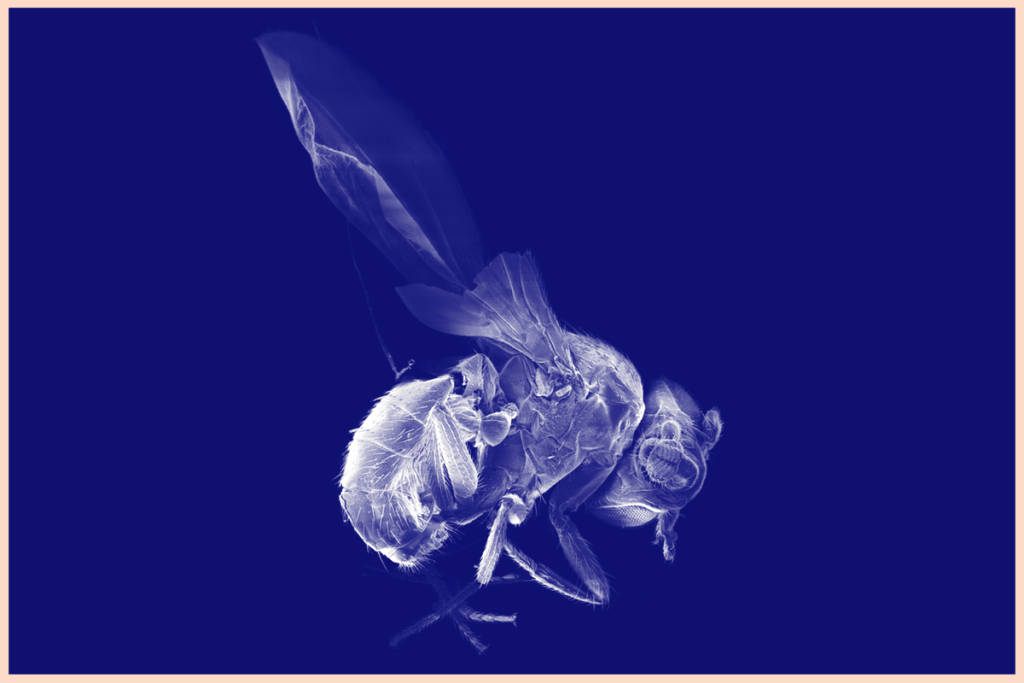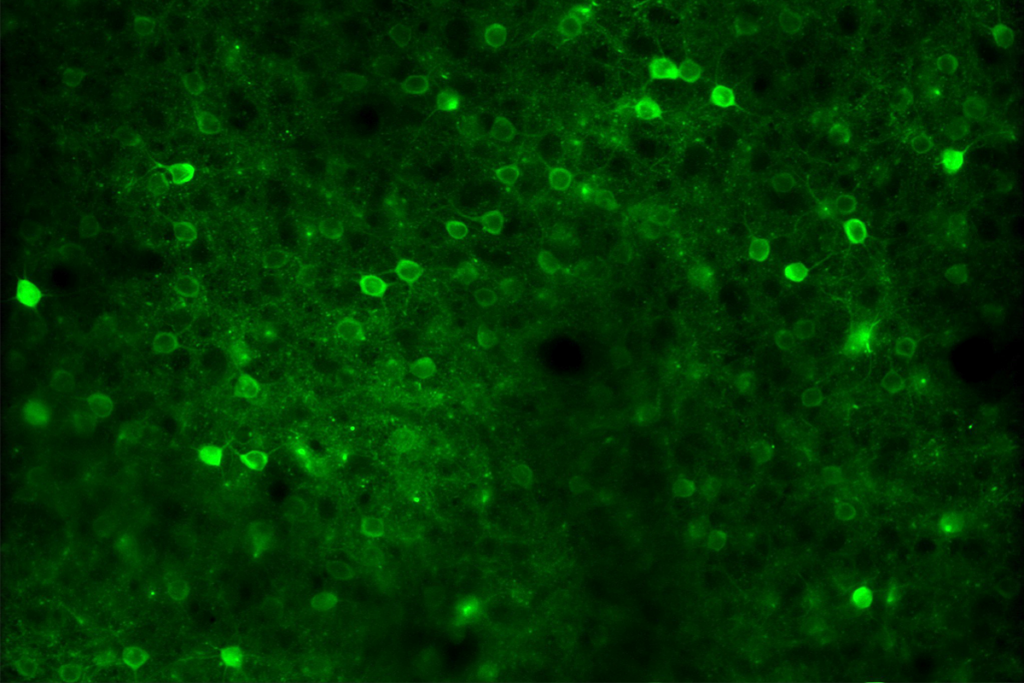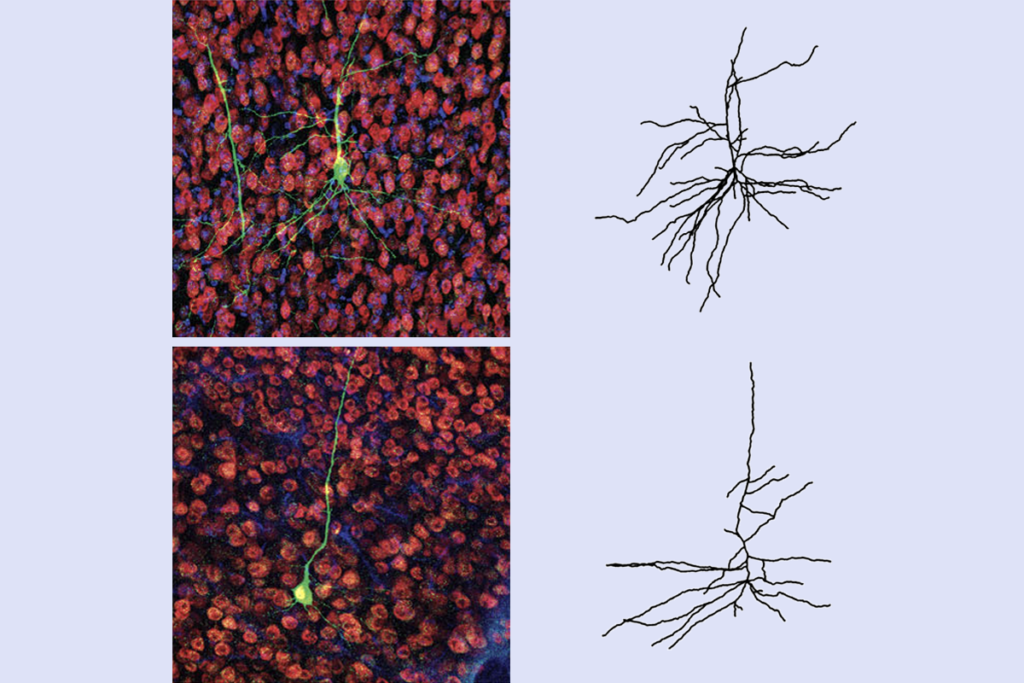Molecular mechanisms: Autism mutation dulls neurons
Loss of one copy of the autism-linked gene PTEN in mouse neurons boosts production of a certain ion channel, and decreases the neurons’ firing rate, according to a study published 21 October in Proceedings of the National Academy of Sciences.
Loss of one copy of the autism-linked gene PTEN in mouse neurons boosts production of a certain ion channel and decreases the neurons’ firing rate, according to a study published 21 October in Proceedings of the National Academy of Sciences1.
PTEN helps regulate cell growth, and mutations in the gene often lead to cancer. Many people with autism also have mutations in PTEN, or deletions that encompass the gene. These mutations are linked to larger-than-normal head size.
Mice lacking both copies of PTEN show autism-like social deficits, have overgrown neurons and overly connected brain networks. Mice lacking a single copy of the gene, which better models the mutations found in people, show little interest in other mice and groom obsessively. They also appear to have deficits in their mitochondria, which produce the cell’s energy.
In the new study, researchers knocked out one copy of PTEN in neurons in part of the mouse cortex that processes visual information. They did this when the mice were 4 weeks of age, after the early stages of brain development.
In brain slices, neurons lacking PTEN are less responsive than control neurons and send fewer signals. This may be because they express more of a certain ion channel that releases potassium when neurons fire. Activating this channel leads to a delay before the same neuron can fire again.
In live mouse brains, too, lack of PTEN affects how frequently the neurons fire, but not their inherent ability to receive visual signals through their signal-receiving branches, or dendritic spines.
The results suggest that the affected ion channel may be a drug target for people with PTEN mutations and for those with autism in general, the researchers say.
References:
1: Garcia-Junco-Clemente P. et al. Proc. Natl. Acad. Sci. USA 110, 18297-18302 (2013) PubMed
Recommended reading

Among brain changes studied in autism, spotlight shifts to subcortex
Home makeover helps rats better express themselves: Q&A with Raven Hickson and Peter Kind
Explore more from The Transmitter

Exclusive: Harvard University lays off fly database team


